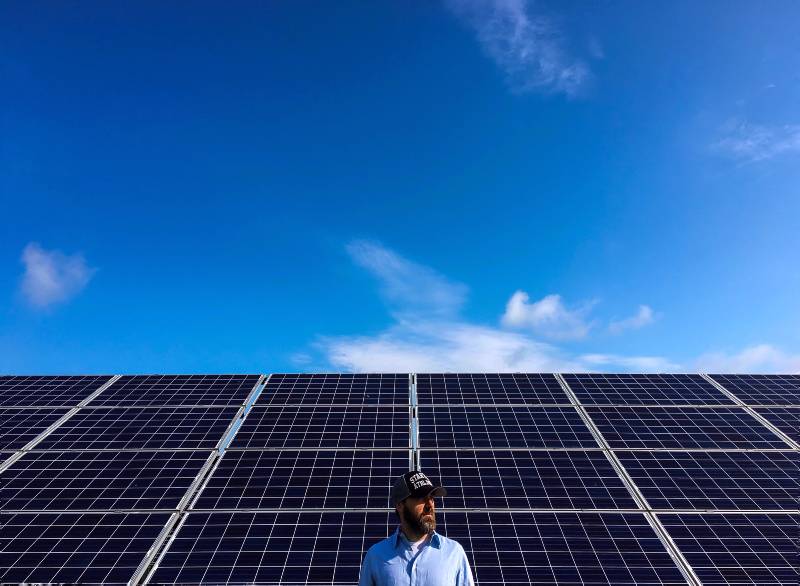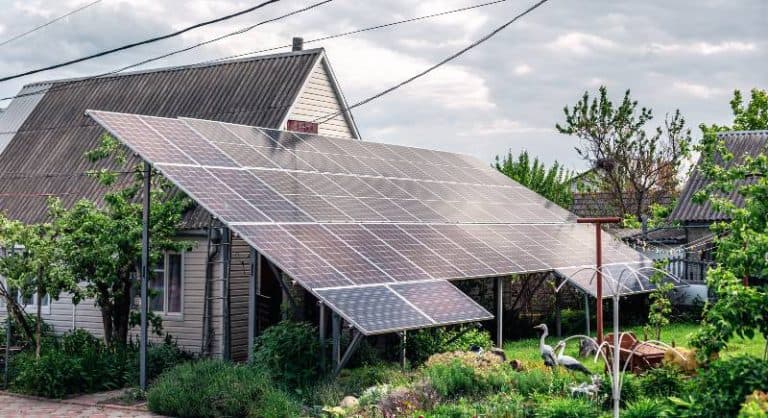Solar Savings: How Long Until They Pay Off?
In our energy-conscious age, solar panels are an increasingly popular investment for homeowners seeking sustainability and electricity cost savings. However, the upfront investment can be significant, leading to the crucial question: “How long does it take to recoup the initial cost?” This guide will introduce you to the concept of the ‘Payback Period’ and walk you through the process of calculating it for your solar panels. Whether you’re a potential buyer deliberating on this green initiative or a current owner wanting to grasp your return on investment, this tutorial will illuminate the financial facts and figures related to solar panel systems.
To determine the payback period in years for your solar photovoltaic (PV) system, divide the installation cost of your system by the yearly savings you’ll achieve. On EnergySage, the typical solar payback periods are less than 9 years.
Key Takeaways
- The payback period is a crucial metric that helps determine when your solar panel investment will break even, considering initial costs, savings, and other factors.
- Several elements, from local electricity rates to solar electricity and available tax credits, play a role in determining the payback period. It’s essential to consider all these factors for an accurate calculation.
- While the solar payback period primarily focuses on financial returns, investing in solar panels also offers environmental benefits, increased property value, and long-term savings.
What is the Payback Period?
The payback period, in the context of solar panels, refers to the amount of time it takes for the energy savings from the solar panels to exceed the initial cost of installing them. It’s essentially the “break-even” point where the benefits (savings) of having the solar panels match the costs associated with them.
A typical payback period for residential solar is between 7-10 years, although this can vary based on several factors such as utility rates, incentives, system size, and more. According to a source, the average payback period for solar panels is 7-10 years, which is impressive considering that solar panels are usually warranted for 25 years and can last even longer.
How it Affects the Decision to Invest in Solar Panels
Understanding the payback period is crucial for anyone considering investing in solar panels. It provides a clear timeline on when they can expect to start seeing a return on their investment. For instance, if the payback period is short, it signifies a quicker return on investment, making solar panels an attractive option.
Conversely, a longer payback period might require a homeowner to consider other factors, such as environmental benefits or increased property value, before making a decision. It’s also worth noting that even if someone moves before the payback period is reached, solar panels can increase the home’s value, as documented by sources like Zillow and Berkeley Lab.
Moreover, with the rising costs of electricity due to inflation (averaging an increase of 3.5% annually over the last 5 years according to the Bureau of Labor Statistics), the payback period can be even shorter as the savings from solar energy become more pronounced over time.
The payback period serves as a vital metric for potential solar panel investors, offering a clear picture of the financial implications and benefits of their decision. By understanding this period, homeowners can make informed choices that align with their financial goals and environmental values.
Factors Affecting the Payback Period
The payback period for solar panels is a crucial metric for homeowners and businesses considering a transition to renewable energy. It essentially tells you how long it will take before the savings from the solar panels offset their initial cost. Several factors can influence this period, and understanding them can help in making an informed decision. Here’s a deep dive into these factors:
Initial Cost of Solar Panels and Installation
This is the upfront cost associated with purchasing the solar panels and getting them installed. It includes the price of the panels, labor, any necessary electrical work, and other associated costs.
Example: Consider two homeowners: Alice buys high-end solar panels with advanced features, costing her $20,000, while Bob opts for a more basic setup costing $15,000. All other factors being equal, Alice’s payback period will be longer because of the higher initial investment.
Solar Panel Efficiency and Energy Production
Not all solar panels are created equal. Some panels can convert sunlight into electricity more efficiently than others. The more efficient a panel is, the more electricity it can produce given the same amount of sunlight.
Example: Imagine two solar panels, both exposed to the same amount of sunlight. If Panel A has an efficiency of 22% and Panel B has an efficiency of 18%, Panel A will produce more electricity. This means that a homeowner with Panel A might have a shorter payback period because they’re saving more on their electricity bill each month.
Local Electricity Rates
The amount you save with solar panels is directly related to how much you would have otherwise spent on electricity from the grid. If local electricity rates are high, the savings from solar panels will be more significant, leading to a shorter payback period.
Example: Let’s say Emily lives in an area where electricity costs 30 cents per kWh, while Jake lives where it’s only 15 cents per kWh. If both have similar solar setups, Emily will see a faster return on her investment because she’s offsetting a more expensive electricity bill.
Available Tax Credits and Incentives
Many governments and organizations offer incentives to encourage the adoption of solar energy. These can significantly reduce the effective cost of installing solar panels, thus shortening the payback period.
Example: Assume that after all costs, Lucy’s solar panel setup comes to $18,000. However, she qualifies for a federal tax credit that covers 30% of the cost, reducing her out-of-pocket expenses by $5,400. This substantial reduction means Lucy will reach her break-even point much sooner than if she hadn’t received the credit.
Step-by-Step Guide to Calculating the Payback Period
Understanding the payback period for solar panels is essential for anyone considering this sustainable investment. It provides clarity on when the savings from solar energy will cover the initial costs. Here’s a comprehensive guide to help you calculate this crucial metric:
Estimating Total Solar Panel System Costs
Begin by gathering quotes from multiple solar providers to get an average cost for your specific needs. This should include the price of the panels, installation charges, any necessary electrical work, and other associated costs.
Tip: Always ask for itemized quotes to understand where your money is going and to compare offers effectively.
Calculating Monthly Energy Savings
Review your past electricity bills to determine your average monthly electricity consumption. This will give you an idea of how much energy you need your solar panels to produce.
Using the efficiency and capacity of your chosen solar panels, estimate how much electricity they will generate monthly. Subtract this from your monthly consumption to determine your potential monthly savings.
Example: If you typically consume 500 kWh per month and your solar panels will produce 400 kWh, you’ll only need to purchase 100 kWh from the grid. If you’re paying 20 cents per kWh, this means you’ll save $80 monthly.
Factoring in Tax Credits and Incentives
Research available federal, state, and local tax credits, rebates, and incentives for solar installations. These can significantly reduce your initial investment.
Deduct these incentives from your total system costs to get an adjusted total cost.
Dividing Total Cost by Monthly Savings to Get the Payback Period
With your adjusted total cost and monthly savings at hand, divide the total cost by your monthly savings. This will give you the number of months it will take to break even.
Example: If your adjusted total cost is $15,000 and your monthly savings are $80, it will take 187.5 months, or approximately 15.6 years, to reach the payback period.
Examples of Payback Period Calculations
Scenario 1: John lives in a sunny state and has high electricity rates. He invests in high-efficiency panels and benefits from a generous state tax credit. His payback period might be as short as 7 years.
Scenario 2: Sarah lives in an area with fewer sunny days and lower electricity rates. She chooses standard panels without any significant tax credits. Her payback period might extend to 12 years.
Scenario 3: Alex lives in a moderately sunny area but benefits from both federal and state tax credits. With average electricity rates and standard panels, his payback period comes to around 10 years.
Calculating the payback period for solar panels requires a bit of research and some basic math. However, it’s a valuable exercise that provides clarity on the financial benefits of your investment. By understanding this period, you can make informed decisions and set realistic expectations for your solar journey.
Benefits of a Shorter Payback Period
When considering an investment in solar panels, the payback period plays a pivotal role in the decision-making process. A shorter payback period offers several advantages, not just from a financial perspective but also in terms of environmental and property-related benefits. Let’s delve into the benefits of a shorter payback period:
Financial Benefits
Immediate Savings: A shorter payback period means you’ll start seeing a return on your investment sooner. Once the payback period is reached, the savings from reduced or eliminated electricity bills become more pronounced, directly benefiting your wallet.
Reduced Financial Risk: Investments always come with some level of risk. A quicker return ensures that even if external factors change (like electricity rates dropping or unforeseen maintenance costs), Your investment is already paid off, mitigating potential financial setbacks.
Higher Return on Investment (ROI): The sooner the system pays for itself, the more years you have of virtually free electricity, leading to a higher overall ROI.
Environmental Impact
Immediate Carbon Footprint Reduction: Solar panels reduce reliance on fossil fuels. A shorter payback period means that the environmental benefits, in terms of reduced carbon emissions, are realized faster.
Promotion of Sustainable Practices: When individuals see a quick return on sustainable investments, it encourages broader community adoption. This ripple effect can lead to larger-scale environmental benefits as more people transition to renewable energy sources.
Resource Conservation: Beyond just carbon emissions, using solar energy reduces the strain on natural resources required for traditional electricity generation, leading to a more sustainable future.
Increased Property Value
Attractive to Potential Buyers: Homes with solar panels, especially those with a shorter payback period remaining, are often more appealing to potential buyers. They recognize the value of an installed solar system that offers immediate savings.
Higher Resale Value: Numerous studies have shown that homes with solar panels sell for more than those without. A system that has already reached or is close to its payback period can significantly boost the property’s value.
Competitive Edge in the Market: In a competitive housing market, having a solar system with a short or completed payback period can be a distinguishing feature, setting your property apart from others.

How to Calculate the Payback Period for Solar Panels FAQs
What is the average payback period for solar panels?
The average payback period for solar panels ranges broadly. According to ‘This Old House’, it lies between six and ten years, and ‘EnergySage’ states it’s under nine years. Meanwhile, ‘Solar.com’ states an average of 7-10 years.
How do tax credits and incentives affect the payback period?
Tax credits and incentives can significantly reduce the payback period for solar panels. These subsidies can lower the upfront costs of installation, thereby accelerating the time it takes to recoup your initial investment.
Does the efficiency of a solar panel affect the payback period?
Yes, the efficiency of a solar panel does impact the payback period. High-efficiency panels can generate more electricity, potentially leading to greater savings and a shorter payback period. However, they are often more expensive, so it’s essential to balance the cost with the projected energy savings.
How do local electricity rates influence the payback period?
Local electricity rates have a notable effect on the payback period. Areas with higher electricity rates can result in more significant savings when you switch to solar, thus shortening the payback period.
Can the payback period be shorter than the warranty of the solar panels?
Absolutely, the payback period can be shorter than the warranty of the solar panels. Most solar panels come with a 25-year warranty, and given that the average payback period is between 6-10 years, homeowners can enjoy many years of free electricity after the breakeven point.
Conclusion
Calculating the Payback Period is an integral part of understanding your financial path when investing in solar panel systems. This measure offers deep insight into the duration it takes to recover your initial expenditure, offering you a strategic financial plan filled with confidence and awareness.
Going solar isn’t solely about considerable financial savings—it presents a golden opportunity for you to contribute to a more sustainable and eco-friendly planet. Investing in renewable energy practices like solar panels vastly reduces your home’s need for grid-supplied power, thus actively propelling global efforts towards efficient energy conservation.
Remember, each transition of a home to sustainable energy contributes to a brighter, greener future for our planet. Let this comprehensive guide foster your journey towards making informed, responsible, and beneficial energy choices. Solar power system signifies more than a simple investment in your household—it’s an investment in the future of Earth.
So, harness the power of the sun for your home and anchor your commitment to ecological responsibility. Step into the dynamic realm of green energy, power your home sustainably and let the Payback Period steer your journey towards smart, eco-conscious investments.
Join the Electrik Living Community
Interested in staying informed about the latest advances in sustainable living and renewable energy solutions? Subscribe to our Electrik Living News and Insights newsletter today! Don’t miss out on the opportunity to join a growing community of conscious readers, passionate about the future of green energy. Let’s stay connected, stay informed, and contribute, one sustainable step at a time.






